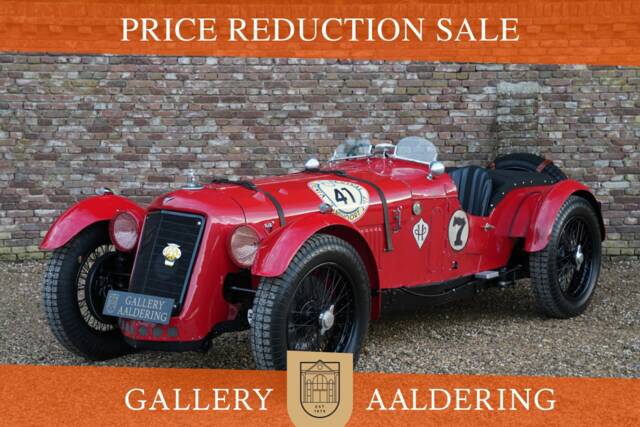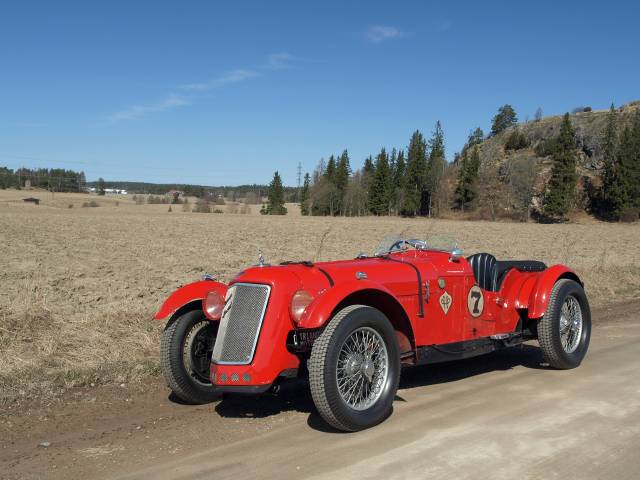Alvis Special classic cars for sale
The Alvis Special represents a distinctive chapter in British motoring, uniting custom engineering with sporting character. Each vehicle is a unique interpretation of Alvis craftsmanship, beloved by enthusiasts for their bespoke construction and exhilarating open-road performance.
Résultats de la recherche

1936 | Alvis Barson Special
Alvis Barson PRICE REDUCTION! Special Straight Eight Exceptionally rare 1936 Alvis Barson Special number 8, Fitted with a unique 4.4-liter straight-eight Alvis engine, Only 2 made in this configuration and this is the only survivor, Hand-made frame with independent rear suspension and Ford rear axle, Marvelous provenance - one-of-a-kind historical vehicle,
Alvis Special listing references from Classic Trader
Below you will find listings related to your search that are no longer available on Classic Trader. Use this information to gain insight into availability, value trends, and current pricing for a "Alvis Special" to make a more informed purchasing decision.

1938 | Alvis Barson Special
Alvis Barson Special 1938 Well preserved pre-war racer.
History of the Alvis Special
The Alvis Special emerged from the tradition of tailoring powerful, often pre-war Alvis chassis with lightweight, hand-built bodies. This practice became widespread in the postwar era, fuelled by motorsport ambitions and the desire for individual distinction. Built as one-offs or in very limited numbers, the Specials typically leverage robust Alvis mechanics—originally engineered in Coventry—matched with aluminium or fabric-clad roadster coachwork. The movement has its roots in British club racing and the hill climb scene, where engineers prized a combination of reliability and nimble dynamics.
Model History
There is no single, factory-defined Alvis Special model series. Instead, specials are predominantly built on the solid underpinnings of Alvis Firefly, Firebird, or Speed 20/25 models. The transition from saloon or tourer to special was often driven by changing tastes, damage to original bodies, or a hobbyist’s quest for improved performance. As a result, Alvis Specials vary widely in appearance, technical spec, and detailing, yet they all share the marque’s engineering DNA.
Highlights and Distinguishing Features
What sets the Alvis Special apart is its wide-ranging individuality; no two are exactly alike. Builders often pair high-compression Alvis engines with uprated brakes and hand-shaped, lightweight bodies. These vehicles are built as drivers’ cars, meant for spirited use, event participation, and historic racing. They appeal to enthusiasts who appreciate the blend of vintage mechanical purity and custom-crafted presentation. The Alvis Special is more than just rare—it represents a culture of ongoing evolution, with some cars altered or enhanced throughout their lives.
Technical Data
Special Editions and Collectible Models
Given the bespoke nature of every Alvis Special, these vehicles themselves are essentially "special editions." Notable examples include builds faithful to pre-war competition cars, or those constructed to emulate period-correct Le Mans racers, utilising rare Alvis mechanicals and traditional coachbuilding. Some cars feature performance or aesthetic upgrades inspired by contemporary motorsport trends or period events.
Engine, Performance, Transmission and Handling
Alvis Specials are valued for their lively and engaging dynamics. The relatively low weight, coupled with robust engines, means acceleration and road holding surpass most original Alvis saloons. Transmission setups, typically four-speed manual, require mechanical sympathy, especially on earlier models without synchromesh. Handling characteristics depend greatly on chassis length and modifications—shorter wheelbase specials can be particularly agile but may ride more firmly. The real pleasure of an Alvis Special lies in its tactile involvement and mechanical feedback, making it popular for driving events and vintage rallies. Popular Special builds are based on the Alvis Speed 20 or Speed 25, both featuring six-cylinder engines capable of strong mid-range torque and performance adequate for pre-war historic motorsport. Builders often favour uprated drum brakes and reworked suspension for improved cornering and stability over original touring models.
Interior, Comfort, Exterior and Design
Design is where Alvis Specials display their most striking individuality. External lines favour a long bonnet, open cockpit, minimal windscreen and pronounced cycle wings or flowing wings, depending on the builder’s inspiration. Aluminium panelling or fabric over ash construction is typical. Interiors can be spartan, focused on driving essentials—Jaeger or Smiths period gauges, leather bucket seats, and four-spoke steering wheels abound. Some builds showcase luxurious detailing, with hand-stitched trim or rare period hardware.
Custom paintwork—from British Racing Green to period-correct two-tone finishes—is another hallmark. Equipment and accessories vary, with spotlights, external fuel fillers, and racing screens cherished by enthusiasts. Special editions mimicking racing heritage may carry competition numbers, bonnet straps, and quick-release filler caps.
Summary
The Alvis Special blends unique engineering heritage with creative individuality. Every car reflects its builder’s vision, often leaning into vintage sporting pedigree and mechanical honesty. Their exclusivity within the Alvis range is confirmed by supply and demand data, making them the central focus for Alvis collectors and drivers seeking character and hands-on driving experience.
